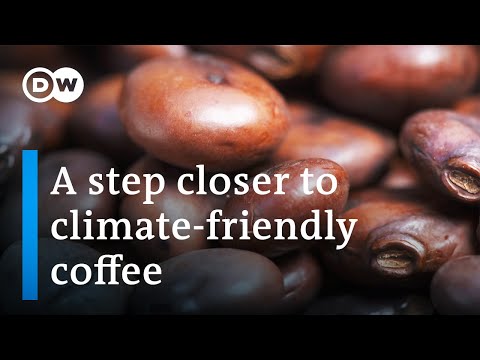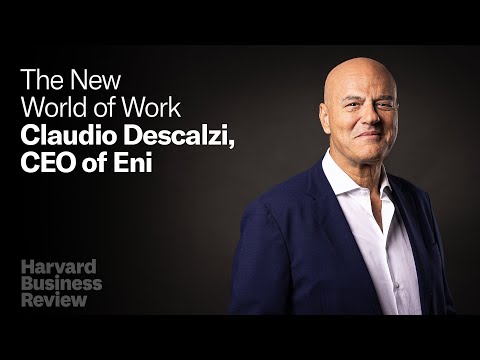Coffee: The future of coffee growing and production | DW Documentary

It’s Germany’s favorite drink. And after crude oil, it’s the world's most traded commodity. Coffee makes many traders and roasters rich, but growers stay poor. Many are forced to give up their plantations. Coffee drinkers tend to pay a lot, but the growers get very little. Producing it harms the environment.
And conventional cultivation isn’t the only problem. The fastest way to get to organic is to cut down a virgin forest and plant coffee and it will just go crazy and then it dies. Huge piles of organic waste remain. So this is a superfood that right now is going to waste. The beans often travel halfway across the world.
Could this plant be grown more locally in Germany? This field will be coffee. This plant has a future. It’s time to take a hard look at how we consume and produce coffee. Is there another way? At 1,700 meters in the Honduran highlands, David Benitez is reaping the fruits of his labor. We only pick the bright red cherries. We leave the rest to ripen further. Here in the hills of Santa Elena, the young coffee grower braves the sun, drought, and market power.
His adobe house without electricity has become a nucleus of change. His siblings, parents and grandfather also live here. To save the farm, they’ve had to learn the new methods David Benitez introduced after studying agriculture.
In Honduras, most farms have been lost. Some communities have left their old farms behind and cut down forests to plant more coffee. That's not right. The many abandoned plantations and fresh clearcuts are evidence of the destruction.
Conventional sun-grown coffee is one leading cause of deforestation. Every cup of coffee that’s consumed destroys about five square centimeters of rainforest. Coffee grown in full sun brings the highest yield, which is why nearly half of the acreage in Central America has been converted for this type of cultivation. Another 25 percent is being converted. David Benitez does things differently. This is a guama tree.
These trees provide shade and enrich the soil with organic material. He grows his plants in the shade of the forest canopy. The coffee is less stressed by the sun.
The plant ripens a bit slower, but the quality is higher. Also, shaded coffee plants don’t need heavy irrigation. Full sun cultivation, however, requires enormous amounts of water, as does the industrial processing of the beans.
Producing just one cup of coffee requires about 140 liters of water. A kilogram of coffee requires 21,000 liters. That could just about fill a swimming pool.
After cocoa, coffee is among the foodstuffs with the highest water consumption. David Benitez doesn’t waste a drop. I wash the coffee in a barrel. Then I mix some of the water into the compost. The rest I use to water the farm. It contains lots of nutrients from the cherry pulp.
When David Benitez switched to organic growing, his father was skeptical. But not anymore. This is the answer. Our ancestors lived this way for thousands of years. How can the big corporations say we can’t survive without conventional agriculture? We used to use a lot of fertilizers, fungicides, insecticides... everything the transnational corporations gave us. When we first switched to organic farming, production dropped 50 or 60%.
But then it stabilized and is now on the upswing. Every year, little by little, our coffee harvest increases. Unlike before, where we’d have a good yield one year and a bad one the next. David Benitez wants to achieve even more.
He’s striving to convince other coffee farmers in the region of this method. Here, too, in southwestern Germany, pioneering work is happening. This year, it looks pretty desolate. A bunch of thistles in here, orache... It's due to the weather. But we don’t spray, so we have to put up with the weeds! Among the undergrowth grows their most valuable crop. When you hear that rattling inside the pods, then it’s dry enough to thresh.
Iris and Fritz Klein have developed a regional alternative to coffee. They’re finally having a breakthrough, many years in the making. We’ve been making lupine coffee for 26 years now. But the generation back then said, No thanks, we can afford real coffee now. Today’s generation says: No, we want to ensure a healthy climate. Coffee produced through conventional cultivation travels thousands of kilometers to reach Germany.
Growing lupines in Germany saves a lot of CO2 emissions in transport. And it improves the local soil. Lupine has very long taproots and therefore can draw from more sources than usual. They stretch down about five meters, to where there’s water even in these dry summers. It’s really a plant for the future, especially in terms of the climate.
This wasn't such an issue back when the Kleins first re-discovered this dynamic flowering legume. Until the 1960s, lupine was the protein crop in northern Germany. Then, with cheap soy imports, it was forgotten.
Somehow, I was able to help bring it back, and I’m happy that I could! The Kleins were also keen to experiment. They first tried roasting them in a pan. Smells a bit like popcorn! The original idea was to make a type of tofu. I wasn’t too enthusiastic because I thought it might go bad fairly quickly. And who would buy it? Thirty years ago, tofu wasn’t so in like it is today. We then experimented with roasting coffee from it, because even then everyone drank coffee.
To celebrate the good harvest, the Kleins are serving homemade cake made with lupine flour along with their caffeine-free coffee alternative, Lupino. They’re also planning to launch a new lupine product by the end of the year. It’s a big day in Santa Elena: The coffee harvest is being brought to the roaster. Lowell Powell unloads coffee from David Benitez and other smallholders. Lowell Powell is from the US and his wife, Mayra Orellana-Powell, is from this area.
Together they founded the Catracha Community. The initiative sells this regional organic coffee in the United States. They then use the profits to support environmental and social projects in Honduras.
Fair trade is not enough. Farmers are not getting ahead. So, is it better than nothing? Yeah. But is it enough? No. Because he doesn't have any disposable income. For me, what coffee is about is the people behind it. And we need to treat people with respect.
And sometimes giving people respect is paying more for their coffee. Lowell Powell was a prosecutor at US Immigration for 12 years. He knows the fates awaiting those who have to give up their coffee plantations and emigrate. I left my job. I just didn't like prosecuting people.
You know, you’d rather be around people helping them. Here I still feel like I'm a lawyer. But the other kind of lawyer: If there's a problem, my job is to fix it.
With the Catracha initiative, the couple promotes more humane sustainable production. They also support further education programs and fair wages. We don't have to be increasing our earnings by 10%, 20% every year. Why not earn 5% and then leave 15% with people that actually make it happen? So I think it is greed that is taking us to destruction because then we're not taking care of the environment, we're not taking care of... especially people. I don't think it is something impossible.
I think we need to support people like David. Lowell Powell collects the harvests from the initiative's small farmers. What he sees during his trips to other plantations worries him. Everyone here used to have traditional farms with good coffee varieties and lots of shade trees.
But then many started switching to conventional cultivation to ramp up production. It’s the wrong way. Along with David Benitez, the initiative wants to show the farmers that there is a better way. It may not turn a quick profit, but it’s sustainable. Gloria Ventura took over the family farm. She’s had to rebuild. My husband used to do everything. Now for four years, it’s been just me.
Her husband abandoned the plantation because of a nasty rust fungus. If the rust fungus hits, sometimes the fruit doesn’t ripen and we can’t harvest. One year it’s a good harvest and the next year there’s nothing. Full sun cultivation and climate change weaken the plants, paving the way for the destructive fungus to spread rapidly across Central America. Since 2012, it’s been destroying the livelihoods of thousands of coffee farmers... including that of Gloria's husband, who emigrated with their six children to the US for work.
Many thousands of farmers from Central America attempt that same trek every year. If they make it into the US, they usually take on unskilled labor and send their hard-earned money back home to their families. Of Santa Elena's 14 thousand residents, two thousand left their homes for the US last year.
David Benitez wants to show those who remain how to build resilient farms. Coffee grown in shade is less susceptible to rust fungus. Step by step, the farmers should make the transition to shaded cultivation.
Together they draw up a plan that will help Gloria Ventura increase her yield. Gloria can plant trees all along the banks of the creek. This will increase the humidity in the area, and micro-organisms and worms will do their work. Gloria Ventura is among the 80 smallholders who have joined the Catracha Community. They benefit from its sales system. Most coffee growers need to take out loans, and what they earn goes to paying them off. But it’s different with Catracha.
We harvest and dry the beans and sell directly. And we make more profit. The coffee market fluctuates greatly. In the last four years, the farmers earned on average less than one euro per pound. Fairtrade brings in roughly one euro thirty cents.
Through the Catracha initiative, they earn almost double that. But better pay is not the only perk. David Benitez and the Catracha initiative have even more ideas to benefit coffee growers. Change is also afoot in Nicaragua. Carole Widmayer has traveled from the US for this pile of waste.
This is the cascara, the leftover that we hope one day this pile will completely disappear. So this is a superfood that right now is going to waste. And if we can turn that into nutritious food, that's the goal.
Carole Widmayer has come to Nicaragua for the Coffee Cherry startup. This is her first visit to the facility where this supposed waste is being turned into a high-quality product. All of that coffee! We are still a startup. We are still small. And one of our biggest challenges has been educating both consumers and companies who can buy this as a wholesale ingredient. We're creating a whole new market. Buenos días... You can smell the coffee!
The coffee supplied by the farmers is pitted here by machine. Then it’s sorted, washed and dried. The industry is focused on the coffee bean.
But the cherry encasing it makes up 40% of the fruit’s weight. 322 million tons per year of pulp are discarded worldwide. It’s a major environmental problem. The heaps of rotting fruit release methane, acidify the soil and contaminate the water. The facility manager shows Carole Widmayer how the team processes the coffee cherries.
This is the Coffee Flour team. They transport the cherries to the drying area. Back there, they catch the fruit skins before they fall into the buckets and are discarded. This saves the skin for further processing.
Carole Widmayer's company in the US produces flour and flakes from the dried fruit. It's got the dried fruit notes and all of the sensory aroma that we look for in coffee cherry. Farmers have not been paid for that before. Now we will pay them for that. So it is new income.
Eighty workers have been hired for the business here. Flour and flakes are already on the market in North America. Recently, coffee cherries were also approved in Germany. All of this is available to be sent to Europe. This is all available now. But it’s not only in the major export countries that coffee cherries are being reconsidered as an ingredient. Let's go. We get to go see the first cherry-picking!
Carole Widmayer wants to learn about the work and see the fresh fruit up close for the first time. Wow. I finally get to taste one. Oh, it's got this wonderful sweetness to it. Those taste amazing. Various types of coffee grow on this organic plantation in Nicaragua. Until now, local residents didn’t consider the yellow and red cherries suitable for consumption. Time for some experimentation in the canteen, where three meals are prepared daily for the farm's employees.
So how many tortillas do you serve a day? That's almost 1500 tortillas for the whole people. For extra and permanent workers too. They’re testing out how dried coffee cherries taste in traditional tortillas.
The new ingredient could offer some extra nutritional value. In addition to caffeine, the coffee cherry contains a lot of antioxidants, minerals and protein. And it’s more than 50 percent fiber. The farm’s manager is excited about the new product. This is a really good idea for the environment too. Many farmers,
they just drop it into the rivers and many springs are contaminated. But how does it taste? Here comes the moment of truth: In my aftertaste, I feel like a fruit. Like a sweet tortilla. I like both, you know?
In the US, some restaurants and bakeries have already begun incorporating coffee cherry flour into their menus. Chef Jason Wilson shows off which dishes utilize the ingredient in his upscale restaurant. He’s been working with the startup from the outset and is constantly developing new recipes. We did gnocchi, we did some madeleines, we made some chocolate cakes.
I worked with this, I feel like, tirelessly, to figure out the water replacement ratios on different recipes. Because this is fruit powder, essentially, and it's a very high fiber fruit as well. Jason Wilson wants to sell this crunchy granola with coffee cherry flour in supermarkets. David Benitez has many ideas on how to revolutionize coffee growing in his home country — all while inspiring other growers. On the Catracha cooperative's farm, he’s devoting himself to his latest project: A teaching garden. We’re growing more than one hundred plant species here.
What we're telling people to do is just grow in a small space and grow a diversity. And this is the same thing that David is doing. And permaculture gets the inspiration from traditional agriculture. We’re sharing our knowledge with the community on how to grow native seeds and avoid using pesticides that harm the environment. And so these are things that farmers can apply at their own houses. So our hope is when people come here, they're like, oh, I can do that.
David Benitez combines the knowledge of his Indigenous ancestors with the insights of modern agriculture. He knows how vital it is to use every part of the coffee plant and waste nothing. If we take our coffee to a mill, the fruit skins are discarded. But when we pit the coffee ourselves, we can turn the fruit skins into fertilizer.
A young farmer from the neighborhood is curious. Now we add micro-organisms. Every thirty days? Sometimes two or three times.
This is a great fertilizer, which we use for vegetables, coffee — for all crops. Alongside coffee, he’s planting fruits, vegetables, herbs, beans, and corn on his family's two hectares. Mixed cultivation strengthens the plants and provides his family with something extra. The best rebellion is to produce what you consume so you don’t have to depend on the transnational companies. Against the odds, David Benitez has managed to thrive as a small farmer in Honduras. He’s also introducing new methods to others and sharing his knowledge.
The young coffee farmer is determined to stay in his homeland. If I went, for example, to the US, I would earn dollars of course. But the money I’d send back here would go straight to buying food. That makes no sense. If instead we produce what we consume and eat what we produce, that’s the best wealth there is.
One of our dreams is to have a farm school where growers can come here and learn about what we do. A man who inspires others and shows: When it comes to coffee, there is another way.
2022-12-25 13:10


